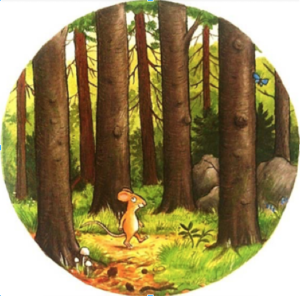I spent part of my morning catching up on the Polymorph Slack channels. As usual there’s been a lot of interesting links posted over the last few days.
I noticed something while reading the linked articles. Many writers would refer to ‘good’ or ‘great’ UX. I’ve heard people say this before, and it has always confused me. It struck me particularly hard today because I was reading so many articles so rapidly, and especially because many of the articles were well thought out and insightful.
I feel that talking about ‘good UX’ is neither of these things. 
What exactly is good UX anyway? Good UX is efficient, it moves users from A to B to C with ease and it makes them feel great while they’re doing it! Right? Actually I’m not sure if that’s what you want from the website for the Apartheid Museum.
‘Good’ or ‘great’ are very subjective terms. They lack context or definition of purpose. Context and purpose are really what UX is all about. Without understanding the context in which an interface will be used or the purpose of an interaction we cannot account for our decision making.
As a definition ‘good’ or ‘great’ are not useful. They imply a set of undefined standards. They allow people to judge work based on their personal secret knowledge. And since their personal opinion and understanding can change, this situation can leave one very disempowered. Challenge people to define what they mean when you hear these terms.
Design is a series of decisions around trade offs: you can’t have it all. Its either blue or red; you can have many simple pages or few very complex ones. One quality excludes another. In a sense design is a process of exclusion – a process of decision making that tightens up a definition until a solution to a problem is found.
In software development we work in teams. We work collaboratively. Designers must work with a range of developers, managers, clients, as well as other designers. This means that communication is key, and that requires understanding what each other are saying. Communication can be hard enough without using words that can be interpreted in as many ways as there are listeners. We need to be able to explain our decisions and our intentions. It allows our collaborators to help us improve what we make, it empowers them to find solutions that are aligned with our own and it saves time in the development process.
So what should we say instead? Try to be specific. It takes effort, but it’s worth it. I often find that my opinions are poorly formed until I try to explain them to others. If I want to use a word like good, without defining why something is good, it usually means I’ve not thought it through. There are a lot of adjectives that are not necessarily subjective: gentle, rigid, colourful, expedient, bold, comprehensive, elegant – all words that can can be good in the right context, but could also be inappropriate. Better still: be even more thorough, define your requirement, define an understanding of the context, be able to explain why a design is the appropriate solution.
Each situation is unique and requires a solution tailored to that situation. It is specific. As designers we need to be specific as well.





